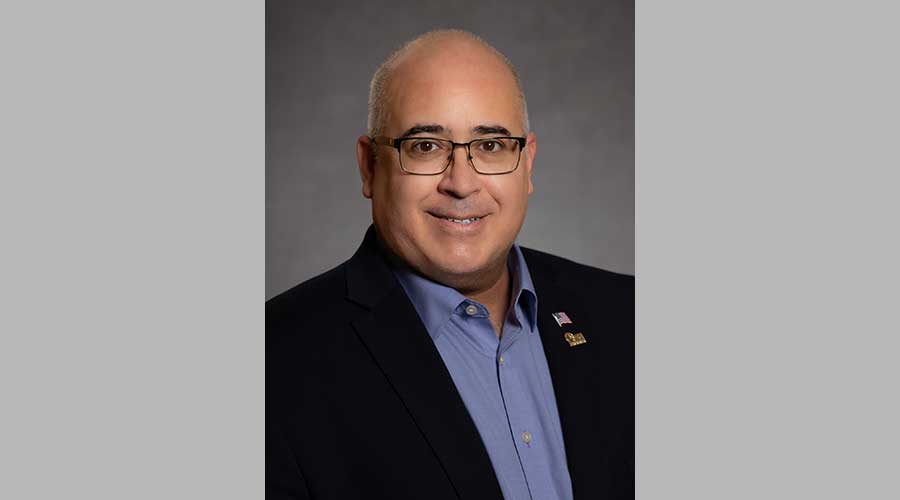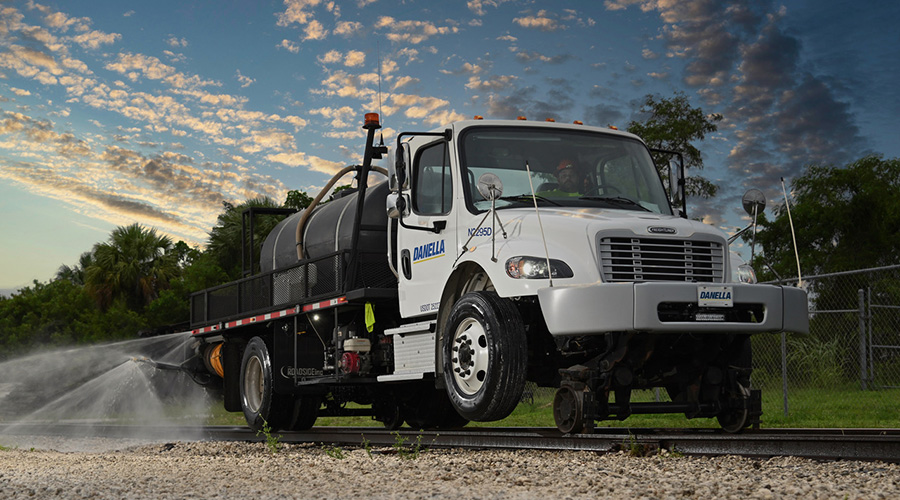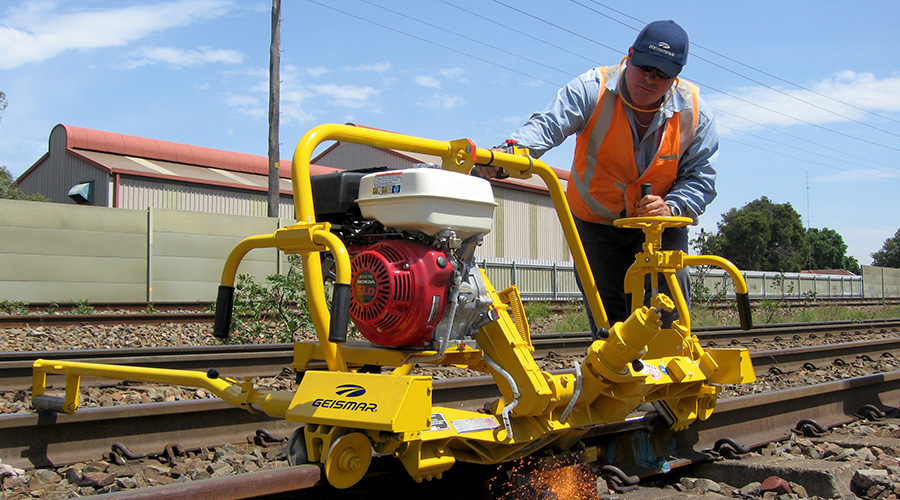Stay updated on news, articles and information for the rail industry
October 2013
Rail News: Rail Industry
Railroads pursuing massive bridge projects to support busier, heavier and faster traffic
— by Julie Sneider, assistant editor
For Amtrak's Jim Richter, 2013 has been a defining year for major bridge projects. In June, the railroad completed a three-year undertaking in Connecticut to replace the original Niantic River Bridge, which is the most active of Amtrak's five moveable structures on the Northeast Corridor and serves as a key link for passenger- and freight-rail traffic between New York City and Boston.
The project involved construction of a two-track electrified bascule bridge across the Niantic River, 58 feet south of the original bridge location between East Lyme and Waterford, Conn.; track realignment along the west and east approaches to the bridge; construction of track embankment and new retaining walls; scour protection; installation of new electrification and signaling systems; deconstruction and removal of the original bridge; and reconstruction of a beach and boardwalk at Niantic Bay.
"Niantic was a big success," says Richter, Amtrak's deputy chief engineer structures. "It's a fine bridge and it will be around for another 100-plus years."
Replacing the 106-year-old structure was a critical step in the plan to modernize and enhance critical infrastructure to allow for faster, more frequent and reliable service in the Northeast Corridor. Since the new bridge opened to traffic in June, train speed has increased from 45 mph to 60 mph, and Richter anticipates trains soon will speed up to 70 mph. It's even possible that speed could exceed 70 mph, he adds.
The Niantic structure is one of many prominent, multi-year bridge jobs that passenger and freight railroads have advanced or completed this year. Most projects were needed to replace outdated or deteriorating structures, some of which date back more than a century. A few others — such as the Portland-Milwaukie light-rail bridge project — are being built to accommodate rail service expansion and growth.
Building a new bridge from the ground up allows project engineers to make use of modern construction methods and materials that will help ensure the new structures will last at least as long as those being replaced. On the Niantic bridge, for example, Amtrak used fiberglass plastic piling — as opposed to timber — for the fender system because of its longer-lasting quality for bridges situated over navigable waterways.
"That will be the standard going forward," says Richter. "It's more fire resistant and not subject to rot or marine borers that like to eat the wood. Also, it's more environmentally friendly; whenever you use timber, you still have to treat it with something. And it's more resilient if [the bridge] is struck by a marine vessel."
Another lesson learned from the Niantic project was the importance of communicating constantly with commercial marine businesses, community leaders and local residents throughout the construction process, says Richter.
"We were impacting a public beach — taking away the public's access to that beach and the boardwalk for three summers. That was significant," says Richter. "And the fact that Niantic is such a busy drawbridge — opening and closing for boats between 3,800 and 4,000 times a year — you have commercial marine businesses that need to know when boats can get through the channel. "
Keeping community members informed also has been critical in Portland, Ore., known as "the city of bridges,"where the Tri-County Metropolitan Transportation District of Oregon's (TriMet) $134.6 million Portland-Milwaukie light-rail bridge is under construction across the Willamette River. The public has been able to follow the construction process via TriMet's live webcams, email updates, videos and photos on a website dedicated to the project. The agency also has invited the public to help name the bridge, which has been under construction since spring 2011.
"There's a lot of excitement in the community about this project," says TriMet spokeswoman Mary Fetsch. "We haven't seen a bridge like this built [in Portland] in 40 years. People can't wait to walk over it, bike over it and ride trains over it."
A Design-Build Project
Constructed under a design-build contract with Kiewit Infrastructure West Co./T.Y. Lin, the four-pier, cable-stayed suspension bridge will enable MAX light-rail trains, streetcars, buses, bicyclists and pedestrians to cross the river. The bridge will stretch 1,720 feet in length and feature five spans; two towers at 180 feet high from pier cap to the top; 3.5 miles of cable; and two 14-feet-wide bicycle and pedestrian paths.
In-water construction began in 2011, when two temporary work bridges and two cofferdams were installed in the river between July and October — the timing determined to minimize impact on the river's habitat. Once the cofferdams were in place, construction started on the two piers and towers. The bridge deck is being constructed from each tower outward.
As of mid-September, bridge work was more than 60 percent completed and construction of the 78 concrete segments was under way, according to David Tertadian, TriMet's resident engineer of bridges and structures, whose office is just a few hundred yards from the bridge construction site. As each segment is installed, cable is threaded through the towers to the deck segments. Twenty cables per tower, 10 per side, will be installed in a needle-and-thread fashion, in which the cables are passed through holes in the tower arms and anchored to the bridge span.
"The segmental construction work is going very well," says Tertadian. "By next spring, we should be ready to link up the two sides in the middle of the river. And that will lead to placing the the track slab on the bridge from end to end."
Unique Elements Featured
Construction is scheduled to wrap up in 2014; then, light-rail signal and overhead catenary systems and bridge lighting will be installed and connected. Trains are anticipated to begin operating across the bridge in 2015. The bridge's complex design incorporates some unique elements, including the use of "lateral deflection devices" (LDDs) to accommodate expansion and contraction movement at the ends of the bridge, according to TriMet.
When completed, it will provide a second light-rail connection between Portland's east side and downtown, offering access points to key destinations.
Another major project designed to accommodate expanded rail service is the Tacoma Trestle Bridge in Washington, a critical connection in Sound Transit's Sounder commuter-rail network. The proposed project would replace a 100-year-old timber structure with a 0.6-mile, concrete bridge featuring double track.
"It will add capacity in a critical segment of our overall system," says Eric Beckman, Sound Transit's project director. "Amtrak is scheduled to reroute their service over this portion of the corridor. So, in addition to the growing service that we're delivering between Seattle and Lakewood, Wash., we'll also have Amtrak service on the route. That's why the structural sufficiency and capacity of [the bridge] are critical for us."
In September, Sound Transit officials learned the project would receive a $10 million grant under the Transportation Investment Generating Economic Recovery (TIGER) V program. The new bridge will help eliminate a bottleneck along a 0.65-mile section from Tacoma Dome Station to East M Street by allowing for two tracks in an area where Sounder, Amtrak and freight trains share the same track.
"We will spend the next three to four months on conceptual engineering," says Beckman. "In early 2014, we'll go into full design mode and start building our contract documents with a goal of being under construction in 2015, and with delivery of the project complete and ready to go in mid-2017."
Metra's Two-Part Strategy
A major initiative under way on Chicago's north side calls for replacing 22 century-old bridges that are past their prime. Metra's $215 million Union Pacific North Line bridge program has been divided into two phases, each with 11 bridge projects. Heavy construction on Phase I began in 2011 and is expected to wrap up in 2015. This phase also includes construction of a new Ravenswood Station, the line's busiest stop. Bridges for one track are being built along the western edge of the right of way over the following streets: Balmoral, Foster, Winnemac, Lawrence, Leland, Wilson, Sunnyside, Montrose, Berteau, Irving Park and Grace.
During Phase II, 11 bridges between Addison and Webster are scheduled for completion in November 2019.
The phased approach is necessary to maintain two open tracks during construction so trains can run on schedule, Metra officials say. The project's most challenging aspect has been maintaining public access to businesses and sidewalks during road closures, says Joseph Ott, director of construction.
Metra communicates with local aldermen and holds meetings to keep residents and businesses informed of the project's status.
"We've had a variety of community meetings to discuss their concerns and we do meet regularly with individual businesses on issues such as truck access and parking," says Ott. "It's mostly a lot of knocking on doors and talking with people directly."
The bridge program — Metra's largest — is being funded mostly with federal dollars.
Meanwhile, some Class Is are dedicating a growing portion of their capital expenditures to major bridge projects. BNSF Railway Co., which budgeted a record $4.3 billion for capital expenditures in 2013, is one example. The Class I is working on three of its largest bridges — out of a total of 210 bridge upgrades this year. The railroad typically takes on only one or two major bridge projects annually, says Robert Boileau, BNSF's assistant vice president of structures.
"We are seeing a continuing increase in traffic and in tonnage, so we need an increased structures program to provide available and reliable infrastructure to accommodate that traffic," he says.
Bridging Freight, Passenger Rail
Construction is under way on projects to replace the Plattsmouth Bridge over the Missouri River, where BNSF's mainline crosses from Iowa to Nebraska; upgrade the Bellefontaine Bridge over the Missouri River near St. Louis; and replace a bridge over the Salt Fork of the Arkansas River near Ponca City, Okla.
On the Plattsmouth project, BNSF is building a new, 1,683-foot structure about 60 feet from an existing 134-year-old bridge, which later will be used as a siding for empty trains so revenue trains can pass. Located on the railroad's mainline between Lincoln, Neb., and Chicago, the line typically is used by coal, grain, intermodal and Amtrak trains. Construction began about 18 months ago and is expected to be finished by year's end.
Earlier this year, BNSF crews began replacing the Bellefontaine structure's steel tower approach spans and stringers in four, 440-foot through-truss spans. Replacing the stringers "is major work that we don't do every year by any means," says Boileau, adding that the project should be finished by late November.
In Ponca City, crews will rebuild the bridge substructure between existing piers to replace pin-connected through-trusses with through-plate girders. The project involves a span-building technique that BNSF uses infrequently: Rather than building the spans on falsework next to the bridge, they will be assembled in a nearby field, then moved via transporters to the bridge location and lifted into place with large cranes.
BNSF officials expect to focus on multiple bridge projects per year for the foreseeable future.
"Next year, we will have five major bridges that we will be rebuilding," says Boileau.
Complicating Factors
Another Class I, Norfolk Southern Railway, is working through the environmental impact documents for one of the largest bridge projects in the Class I's history: replacement of the historic Portageville Viaduct over the Genesee River in Letchworth State Park in New York. NS Chief Engineer Jim Carter had hoped construction on the new 963-foot bridge would begin this year, but its state park location adds to the project's complexity. An effort to qualify the $68 million project for a TIGER V grant earlier this year was unsuccessful, which also contributed to the extended timeline, Carter says.
Until the new structure is completed, the existing 138-year-old bridge remains in service on the Class I's Southern Tier route.
"We've installed a monitoring system to alert us of any abnormalities in the way the bridge is behaving," says Carter. "We're monitoring it continuously. For the past few years, we've been doing a full-blown inspection of the bridge every three months. It's an extra measure of safety."
Among significant bridge projects advancing at CSX Transportation in 2013 is one centered in western Maryland and eastern West Virginia in an area known as North Branch, where the Class I plans to replace a 490-foot-long, open deck pin-truss bridge built in 1901. CSX Assistant Chief Engineer of Structures Ed Sparks expects full construction to begin in the fourth quarter and conclude by second-quarter 2014. The new structure will feature wider track centers and a ballasted deck.
A unique aspect of the project is the process crews will use to replace the old structure, says Sparks.
"This is a four-span bridge and the plan is to construct the new bridge adjacent to it, roll out the old one and roll in the new one all in one shot," he says. "We've done that for single spans, but to do all four spans simultaneously is new. ... We cut the track and slide the existing bridge out. Essentially, we relocate the existing bridge on a railing system, move it laterally away from where it currently sits; then, we fill the void with a new bridge on a parallel railing system."
Swapping out the two bridges will require traffic closures, so the process will need to be accomplished quickly, probably in less than two days, says Sparks. Freight and Amtrak trains use the route.
"This project is on one of our main corridors on the National Gateway route," says Sparks. "We try to have at least one of these significant projects a year. We have an active effort to target pin-truss bridges for elimination because they are the older truss bridges, they are generally lighter capacity and are higher maintenance."
Representatives at freight and passenger railroads say they expect major bridge projects to be on their annual maintenance-of-way agendas well into the future, as they continue to replace century-old structures with modern ones that can endure today's busier, heavier and faster rail traffic.
Keywords
Browse articles on Amtrak Niantic River Bridge Northeast Corridor Tri-County Metropolitan Transportation District of Oregon Portland-Milwaukie light-rail bridge Kiewit Infrastructure West Co./T.Y. Lin Tacoma Trestle Bridge Sound Transit Metra Union Pacific North Line BNSF Railway Co. Norfolk Southern Railway CSX TransportationContact Progressive Railroading editorial staff.


 2025 MOW Spending Report: Passenger-rail programs
2025 MOW Spending Report: Passenger-rail programs
 Gardner steps down as Amtrak CEO
Gardner steps down as Amtrak CEO
 Guest comment: Oliver Wyman’s David Hunt
Guest comment: Oliver Wyman’s David Hunt
 Women of Influence in Rail eBook
Women of Influence in Rail eBook
 railPrime
railPrime






